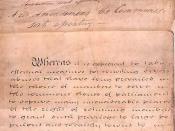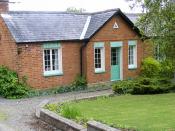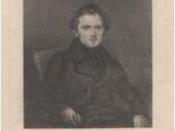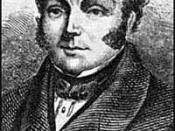The outcome of the social revolutions of 1830-1833 left Europe in a general sense of discontent. Governments were doing their best to limit democratic movements by restricting voting privileges to the wealthier middle classes. Limited voting power kept the Whig party "safe" from radical pressure in Britain. These absurd manipulations of the electorate and parliament encouraged democrats and radicals (middle classes) from all over Europe to protest and eventually uprise.
One of the best, most comprehensive examples of a social revolution in this period is Britain's Chartism. This radical movement pushed for democratic rights in order to improve social conditions in industrial Great Britain. It arose from the popular discontent following the Reform Act of 1832, which gave very little importance to large, industrial boroughs in parliament. Movements of mass discontent in Yorkshire and Lancashire caused by industrial exploitation and economic depression had already taken place.
In 1838, the cabinet-maker William Lovett and the tailor Francis Place wrote the "People's Charter". It is best known for its "Six Points", which proposed the following: universal manhood sufferage, equal electoral districts, vote by ballot, payment of members of Parliament, removal of the property qualification for the Members of Parliament, and annual general elections. The first five of these demands were granted (even though it took until 1918 to finalize the decision), but the sixth was refused because it stressed the radical infuence on the program. The Whig belief of the sovreignty of the parliament clashed with that of the radicals, who felt that the parliament should be entirely subject to the will of the people.
Even though Chartism originated from London's the artisans and radicals, it found most of its support from the industrial middles classes of northern England. The Birmingham Union and Leeds' radicals soon joined forces in an element of extremism. Two Irish orators, Bronterre O'Brien and Feargus O'Connor brought together hundreds of starving men and women, preeching violent propaganda (O'Conner reached out to so many people also thanks to his newspaper, Northern Star). People all across Great Britain (including European refugees and exiles) were now fighting for one common cause; "The Charter".
Chartism reached its highest point with the calling of a National Convention just meters from the House of Parliament. An enormous petition for which hundreds of thousands of signatures had been collected was presented to the Parliament. Following the submission of the petition, the question on everybody's mind was what to do if the Parliament were to reject the document. Lovett and Place (along with most of their southern followers) supported constitutional methods only, and encouraged a peaceful protest. O'Conner and the more extreme revolutionaries continued to want to resort to violence.
In July 1839, the petition, signed by over one and a quarter million angry citizens, was rejected by the House of Commons. Utter chaos broke out, but the riots, strikes, and insurrections never led to revolution. The moderate Chartists continued to resort to peaceful propaganda, and the few remaining extremists persisted with their small uprises all through the 1840s.
Between 1842 and 1848, many more petitions were presented to the Parliament, but each time bitterly rejected. The flame of Chartism had now been extinguished. The middle class diverted to the Anti-Corn Law, the artisans began to support peaceful agitation, and the working classes turned toward trade unionism. The movement, however, did not sink low in the image of Victorian England. It helped bring out the ills and injustices of industrial Britain, and was of great importance for further reforms.





